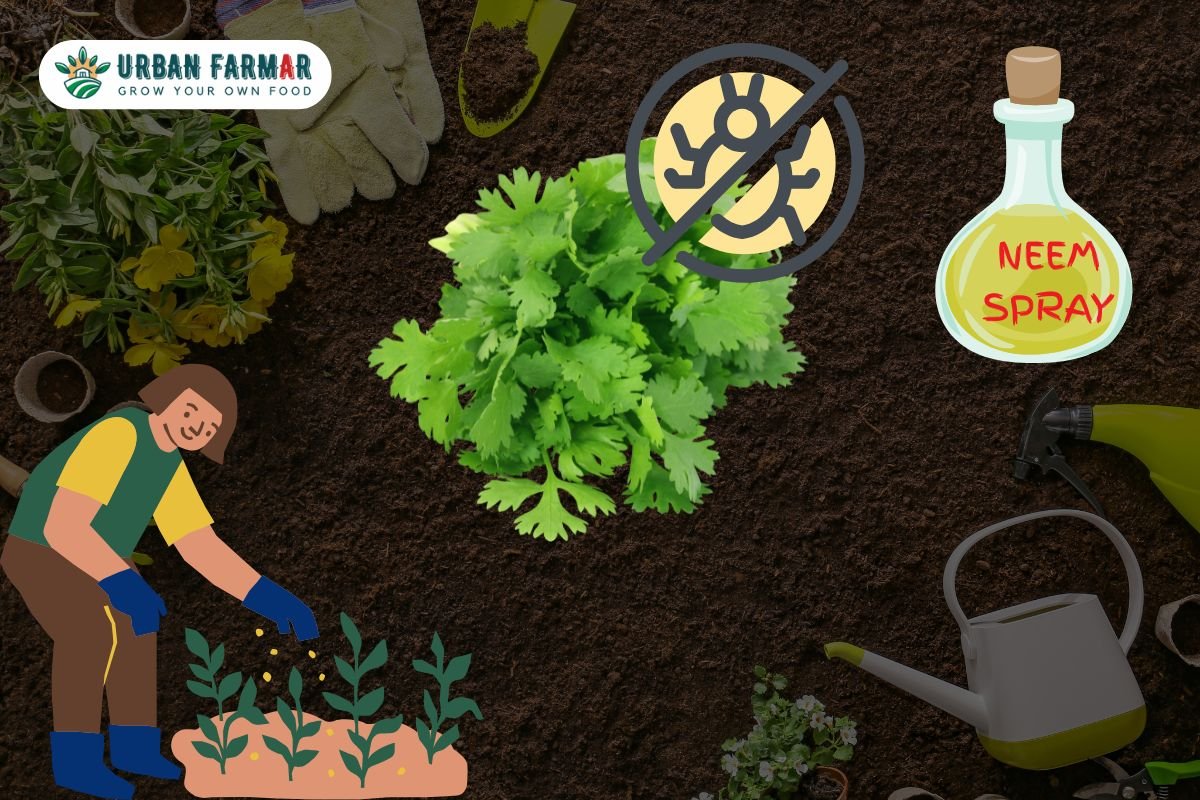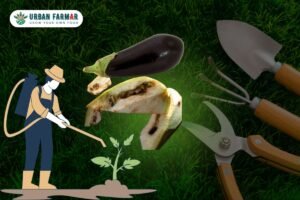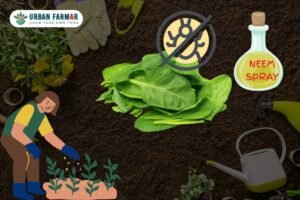Growing coriander, commonly known as dhaniya, at home can be immensely rewarding, adding fresh and aromatic flavors to your dishes. However, coriander can sometimes be a tricky herb to cultivate successfully. This guide will explore the common challenges of growing coriander at home and provide practical solutions to overcome them.
Introduction to Coriander (Dhaniya)
Coriander (Coriandrum sativum) is a versatile herb used in Indian cuisine for its flavorful leaves and seeds. It’s a fast-growing, cool-season crop that can thrive in containers, small gardens, or even kitchen windowsills. However, coriander’s sensitivity to environmental conditions often makes it challenging for beginners.
1. Poor Germination Rate
The Problem:
Many gardeners face difficulties in germinating coriander seeds, often due to poor-quality seeds, incorrect planting depth, or unsuitable conditions.
The Solution:
- Use Fresh, Quality Seeds: Always buy fresh seeds from a trusted source. Older seeds often have a lower germination rate.
- Pre-soak Seeds: Soak seeds in water for 12-24 hours before planting to enhance germination.
- Correct Planting Technique: Sow seeds 0.5 inches deep and lightly cover with soil. Avoid compacting the soil too much.
- Ideal Temperature: Coriander prefers a temperature range of 15-25°C. Too much heat can hinder germination.
2. Bolting (Premature Flowering)
The Problem:
Bolting, or early flowering, is a common issue where coriander plants focus energy on producing seeds instead of leaves. It usually happens due to high temperatures or water stress.
The Solution:
- Choose Slow-Bolting Varieties: Opt for varieties bred to resist bolting.
- Maintain Cool Temperatures: Provide partial shade or grow indoors during hot months.
- Consistent Watering: Keep soil moist but not waterlogged. Mulch helps retain moisture.
- Regular Harvesting: Regularly trim the leaves to delay flowering.
3. Yellowing Leaves and Nutrient Deficiencies
The Problem:
Yellowing leaves often indicate nutrient deficiencies, improper watering, or pest infestations.
The Solution:
- Balanced Fertilizer: Use a balanced organic fertilizer rich in nitrogen.
- Avoid Overwatering: Water only when the soil feels dry an inch below the surface.
- Check for Pests: Inspect for aphids or other pests and treat organically if needed.
4. Pests and Diseases
The Problem:
Aphids, spider mites, and fungal diseases can affect coriander, stunting growth and damaging leaves.
The Solution:
- Neem Oil Spray: Apply neem oil every 10-15 days to prevent pests.
- Companion Planting: Grow coriander near basil or marigold to repel pests.
- Good Air Circulation: Avoid overcrowding plants to reduce humidity.
5. Slow Growth or Stunted Plants
The Problem:
Coriander may grow slowly or appear stunted due to poor soil quality or insufficient sunlight.
The Solution:
- Rich Potting Mix: Use soil rich in organic matter and nutrients.
- Adequate Sunlight: Ensure coriander gets 4-6 hours of direct sunlight.
- Regular Fertilizing: Feed with compost tea or organic fertilizer every 2-3 weeks.
FAQs About Growing Coriander at Home
Why does my coriander bolt quickly?
High temperatures, water stress, and inconsistent harvesting can cause bolting.
How often should I water coriander?
Water moderately, keeping soil moist but not soggy.
Can I grow coriander indoors?
Yes, place near a sunny window or under grow lights.
Why are my coriander leaves turning yellow?
This could indicate overwatering, poor drainage, or nutrient deficiency.
How can I make my coriander bushier?
Regularly prune leaves to encourage branching.
Conclusion
With proper care and understanding of coriander’s needs, you can enjoy fresh, aromatic dhaniya right from your home garden. By addressing common challenges and using the right techniques, you can ensure a lush and productive coriander harvest throughout the year. Happy Gardening!




